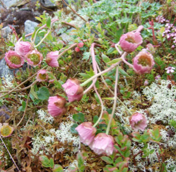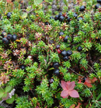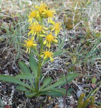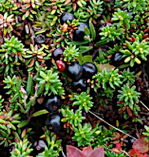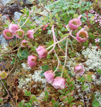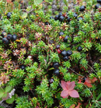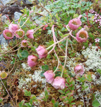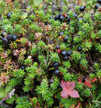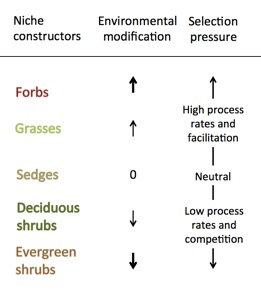TUNDRA PLANT COMMUNITIES AND HERBIVORES

First and foremost we study tundra communities, and especially interactions between tundra plants and important tundra herbivores: small rodents and reindeer.
With our study designs we explore effects of seasonal and spatial contrasts in densities of herbivores as well as temperature and other environmental factors.
We work on method developments to better address questions across large spatial and temporal scales, including methods for plants (PIM), herbivores (camera trapping, hunting statistics) and cross-cutting methods (NIRS, DNA metabarcoding).
On this page we present some of study topics. Scroll down to see them al.
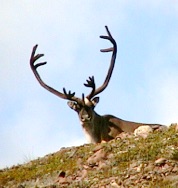

Grasslands neighbouring tall shrubs respond fast to herbivory. Their species composition changes in less than three years.

VEGETATION EFFECTS ON SMALL RODENT FEEDING ECOLOGY
Small rodents have evident impact on vegetation, but does vegetation have any role in explaining small rodent population cycles? To be able to assess this, a more detailed understanding of the small rodent diets and feeding ecology is needed. We show that the DNA metabarcoding method
enables a better
understanding of the diet.
Expansion of tall shrubs has been observed
in regions of the circumpolar tundra with
climate warming recognized as the main
driver. However, both small rodents and reindeer reduce shrub expansion by reducing the recruitment of tall Salix shrubs. Variation in shrub extent and pattern is also linked to patterns in neighbouring vegetation, suggesting other abiotic and biotic drivers are important as well.
We find small rodents to have a wider and more diverse diet than assumed before, and although they are selective they are flexible in their food selection.
THE ROLE OF CROWBERRY
IN TUNDRA ECOSYSTEMS
Crowberry is a common evergreen dwarf shrub in the Fennoscandian tundra as well as in other circumpolar areas. It is not a palatable plant to herbivores. And we find it severely limits both the growth of several co-occurring plants. Accordingly, crowberry is a predictor for species distributions along with climatic predictors. Crowberry also reduces diversity.

SILICA-RICH GRASSES
We have found reindeer to promote silica-rich grasses in tundra grasslands. Build up of silica in grasses has been suggested as a mechanism regulating small rodent population cycles. We tested this but found no corroborating evidence. We have found NIRS as an effective way for estimating Silica- content, enabling further exploration of the role of silica in plants in tundra ecosystems.


CLIMATE CHANGE,
HERBIVORES AND
TUNDRA SHRUBIFICATION

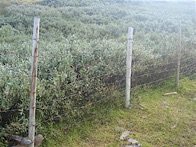
In COAT - Climate-ecological Observatory of the Arctic Tundra - we monitor changes in the tall shrub tundra, including tall shrub and grassland habitats.


NICHE CONSTRUCTION



SHRUBIFICATION IS LINKED TO A RANGE OF ABIOTIC AND BIOTIC CHANGES, PROMOTING SPECIES RICHNESS
Plant species modify their environment, and depending on their functional traits, they can modify the environment in significantly different ways. This modification can also be termed niche construction, or ecosystem engineering.
We have made a conceptual model illustrating how nIche construction by plants can be an important driver of biodiversity.
Forbs and grasses modify the environment in ways that promote species coexistence, increasing biodiversity.

Crowberry produces a range of compounds in its leaves of which Batatasin III is one. These compounds interfere with other organisms in ways that classifies crowberry as an allelopathic species.
